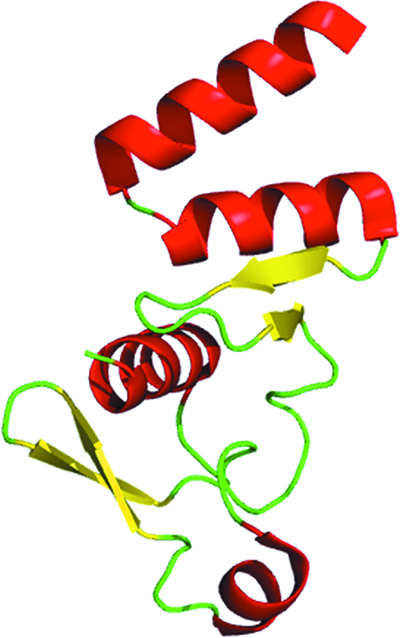Nucleoprotein C-terminal domain from the Ebola and Marburg viruses
Ebolavirus and Marburgvirus belong to a virus family called Filoviridae and can cause severe hemorrhagic fever in humans. The outbreak of Ebola virus disease (EVD) in West Africa demonstrates the grave threat that these viruses pose globally to human health. While the EVD outbreak is slowly losing momentum, it is still unprecedented, resulting in over 23 000 cases and more than 9000 deaths by late 2015.
fever in humans. The outbreak of Ebola virus disease (EVD) in West Africa demonstrates the grave threat that these viruses pose globally to human health. While the EVD outbreak is slowly losing momentum, it is still unprecedented, resulting in over 23 000 cases and more than 9000 deaths by late 2015.
There are two species of Marburgvirus (MARV and RAVV) and five species of Ebolavirus (Zaire, Reston, Sudan, Taï Forest and Bundibugyo) within the Filoviridae family of negative-sense, single-stranded RNA (ssRNA) viruses. In each of these viruses the ssRNA encodes seven distinct proteins. One of them, the nucleoprotein (NP), is the most abundant viral protein in the infected cell. It is tightly associated with the viral RNA in the nucleocapsid and is essential for transcription, RNA replication, genome packaging and nucleocapsid assembly prior to membrane encapsulation.
Until recently, the nucleoprotein was one of two proteins encoded by the Ebolavirus genome, that have not yet had their structures characterized. Since this protein is critical for the assembly and replication of the virus, it is recognised as a suitable drug target. Recently a group of scientists [Baker et al. (2016). Acta Cryst. D72, 49-58; doi: 10.1107/S2059798315021439] have shown that the homologous C-terminal domains of NP from two related pathogenic species of Ebolavirus, Taï Forest and Bundibugyo, have structures that are highly similar to that of a Zaire variant, in spite of differences in the amino-acid sequence. Interestingly, the related NPCt domain from MARV has a structure that is significantly different from the Ebolavirus consensus structure.
In addition, structural characterization of NPCt from the different Ebolavirus species is important since the Ebolavirus NPCt has also been identified as a possible target for the development of species-specific diagnostic tests.


